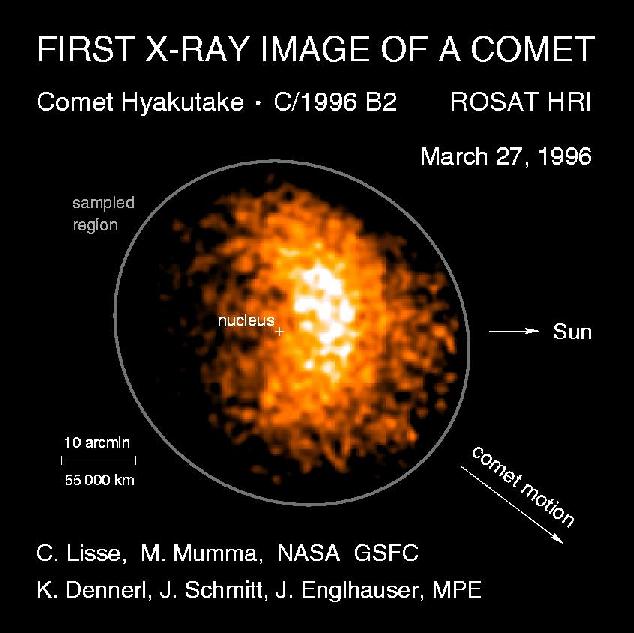
 Credit: C Lisse, M. Mumma (GSFC)/K. Dennerl, J. Schmitt, J.
Englhauser (MPE)
Credit: C Lisse, M. Mumma (GSFC)/K. Dennerl, J. Schmitt, J.
Englhauser (MPE)
A Million Degree Snowball
Comets are often thought of as "dirty snowballs", since they're primarily
composed of ice and dust. Who would have expected that these snowballs
could be surrounded by million-degree gas? It seems a surprising thing,
but in fact comets are surrounded by extremely hot gas, for at least part
of their travels around the sun. The presence of this superhot gas was
detected for the first time on March 27, 1996 by scientists at the Goddard Space Flight Center and the Max Planck Institut fuer Extraterrische
Physik by studying images of the comet Hyakutake
taken by the High Resolution Imager on the ROSAT X-ray
observatory. This superhot gas generally lies between the comet and the
sun, and perhaps is produced by the exchange of electrons from the cometary
gas and the solar wind material as the comet moves around the sun. The gas
is far enough away from the comet itself, and has very low density, so
there's no danger that the comet itself will melt.
Last Week *
HEA Dictionary * Archive
* Search HEAPOW
* Education
Each week the HEASARC
brings you new, exciting and beautiful images from X-ray and Gamma ray
astronomy. Check back each week and be sure to check out the HEAPOW archive!
Page Author: Dr. Michael F.
Corcoran
Last modified May 26, 2001


